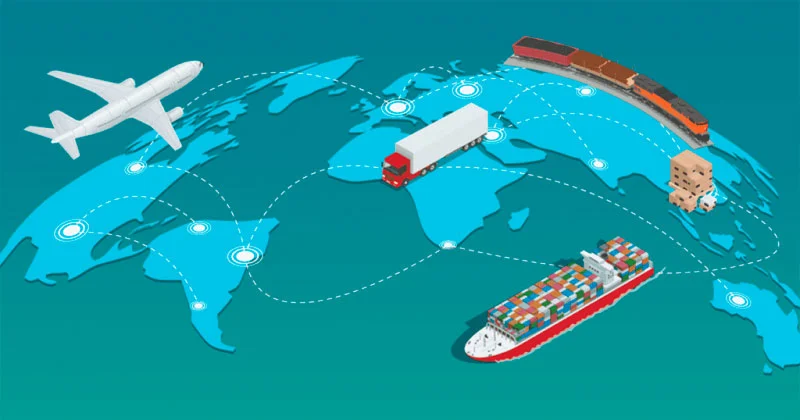Transform Your Business With AI Software Development Solutions https://www.globalcloudteam.com/ — be successful, be the first!
Create A Roadmap For Large-scale Container Terminals

This can quickly become overwhelming, especially when a container deployment contains microservices (which usually come with their very own containers). Historically Kubernetes was suitable only for stateless services. However, many applications have a database, which requires persistence, which leads to the creation of persistent storage for Kubernetes. Implementing persistent storage for containers is one of the prime challenges of Kubernetes directors what is container orchestration, DevOps and cloud engineers.
Have Proper Monitoring Solution
But as engineering teams started to containerize every service within multi-service applications, these teams soon needed to cope with managing a complete container infrastructure. It was difficult, for example, to handle the community communication amongst a quantity of containers and to add and take away AI Robotics containers as wanted for scaling. Container orchestration is a crucial element for managing containerized purposes in a distributed setting.
Importance Of Container Orchestration

By packaging software into remotely-accessible containers, it’s possible to bypass restrictions and run an operating system in the public cloud and from other locations. We at Simform have engineers who love to stay on high of the most recent trends concerning containerization, container orchestration, and different tech innovations reworking whole industries. Let us be your know-how associate in solving your enterprise’s hardest challenges via disruptive technologies. Apache Mesos, slightly older than Kubernetes, is an open-source cluster manager. Its lightweight interface permits scaling as much as greater than 10,000 nodes easily and impartial evolution of frameworks that run on top of it.
What’s A Docker Swarm Cluster?
This step can also be essential for enabling the groups to deploy the identical utility throughout totally different growth and take a look at environments earlier than it goes into manufacturing. As all the small print related to the appliance reside within containers, utility installation is easy. And so is the scaling with container orchestration allowing easy setup of latest cases. Modular design and easily repeatable constructing blocks of container-based systems allow rapid deployment, which is particularly useful for bigger organizations. This allows you to handle visitors across multiple functions running in numerous areas using one load balancer configuration.
Based on the potential issues which will arise from the aforementioned deployment course of, this paper researches the problem of two-stage load balancing container deployment optimization with coarse-to-fine granularity. In order to explain the issue extra clearly and intimately, this paper divides this optimization downside into two elements. The first part is to position the container requests, which require sure sources, onto a quantity of digital machines in an inexpensive method.
However, we attempt to put some generic benefits of managed vs. self-hosted solutions. Azure Kubernetes Service is a managed extremely available kubernetes service from Azure. Along with core Kubernetes options, it presents container management and orchestration out-of-the-box features. Kubernetes offers many functionalities that native docker instruments don’t provide.
Container orchestration options can also be used to create a sturdy administration framework that complements large-scale microservices deployments. After container deployment at the host degree is completed, the container orchestration solution works by taking on the administration of containers. The administrator should create a definitions file for the container to ensure the effective management of container automation. We discussed how containers are lightweight and transient, which means a large-scale enterprise with a relevant use case can end up having to handle hundreds of containers, in manufacturing, on the identical time.
And the Traefik part on the visitors software will help on this. Traefik is a contemporary open source, reverse proxy and cargo balancer designed to manage and route visitors to your microservices or net application. It simplifies the deployment of utility by mechanically detecting the providers and routing site visitors to them. There are a number of other kinds of objects that can be outlined as nicely. Like the providers which provide the flexibility to connect pods together and make them discoverable using in-cluster DNS.
Consequently, an even distribution based solely on amount could end in certain VMs being disproportionately burdened with duties, while others remain comparatively underutilized. This phenomenon results in a concentration of containers, as illustrated in Fig 2. There are several orchestrators in the business now, every with their very own options and trade-offs. We have, for example, Swarm, initially developed by Docker, now Swarm is a Mirantis product. We have Nomad from HashiCorp, it’s another popular orchestration service and it’s flexible enough to orchestrate a quantity of forms of workloads, together with container and virtual machines.
Declarative specs representing the specified state of Pods/containers. Okay, now that there‘s little doubt on why orchestration is essential, let‘s look at well-liked options and then concentrate on getting started with MicroK8s. Orchestrators rollout and rollback utility safety patches easily.
A Kubernetes volume[60] supplies persistent storage that exists for the lifetime of the pod itself. This storage may additionally be used as shared disk area for containers throughout the pod. Volumes are mounted at particular mount points within the container, which are defined by the pod configuration, and cannot mount onto other volumes or hyperlink to different volumes. The same quantity could be mounted at completely different points within the file system tree by different containers. A node, also referred to as a employee or a minion, is a machine the place containers (workloads) are deployed. Every node in the cluster must run a container runtime, as nicely as the below-mentioned elements, for communication with the primary network configuration of those containers.
- Resmin and Resmax are the minimum and maximum values of the affordable resource range for every digital machine VMj(1≤j≤n).
- If you wish to un-deploy or to delete a service, you will use the kubectl command with the delete command with the -f choice and the manifest, like this.
- Container orchestration is a new expertise that has been around for only a few years.
- Before diving into the service sorts, it’s important to grasp what Docker Swarm providers are.
Smaller development teams typically wouldn’t have the assets to handle this problem, so they could have to tackle the additional cost of partaking a 3rd get together for administration assist. Alternatively, they might choose to deploy their workloads on a managed solution and, in so doing, end up with excessive operating bills or vendor lock-in. Hello, welcome to this tech discuss session about container orchestration. In previous periods, we’ve seen that pictures and containers are a regular method to easily run and distribute applications across computers and servers. However, a manufacturing machine typically must function a number of containers.
There are plenty of moving components involved, and there are some critical challenges to beat. But the payoff can be large if you choose properly when deciding on an orchestration tool and have the patience to be taught how it works earlier than making any adjustments. Also developed in 2014 and also known as K8s, Kubernetes has emerged as a de facto commonplace for container orchestration, surpassing Docker Swarm and Apache Mesos in popularity. Originally created by Google, Kubernetes was donated to the CNCF as an open source project. An orchestrator can readily plug into monitoring platforms like Datadog to realize visibility into the health and standing of each service. An orchestrator supplies a stable external endpoint for different providers to speak with, making a constant and extremely available service model that does not depend upon the state of particular person containers.
However, in different scenarios it might be essential to deploy a pod to each single node in the cluster, scaling up the variety of whole pods as nodes are added and rubbish amassing them as they are removed. This is particularly helpful for use instances where the workload has some dependency on the actual node or host machine, such as log collection, ingress controllers, and storage providers. The automated process of managing, scaling, and maintaining containerized purposes is called container orchestration. Containers are software executables that embody application code, libraries, and dependencies so that they are often run anyplace. Container orchestration tools automate numerous actions that software program groups face in the course of the lifecycle of a container.
